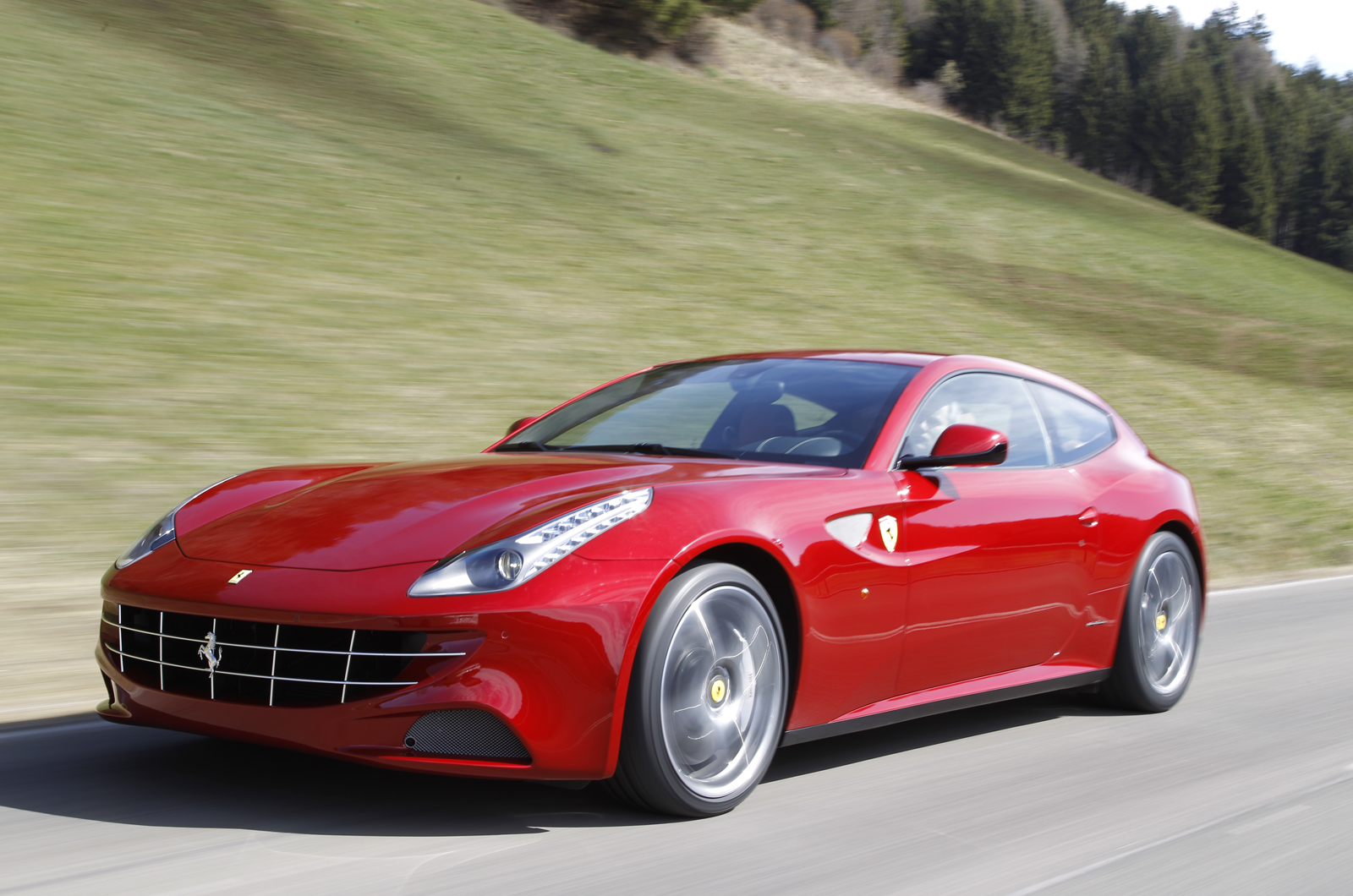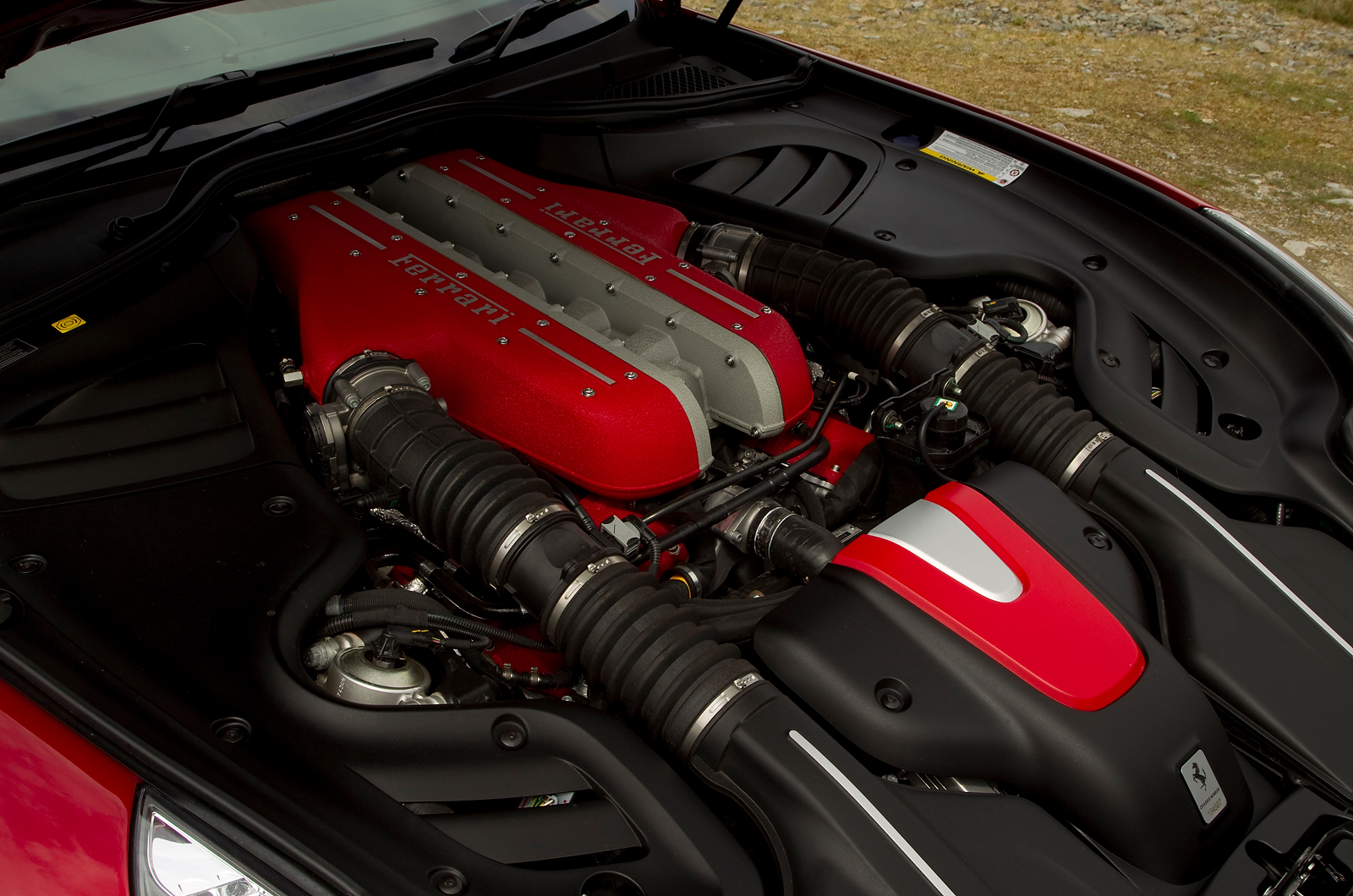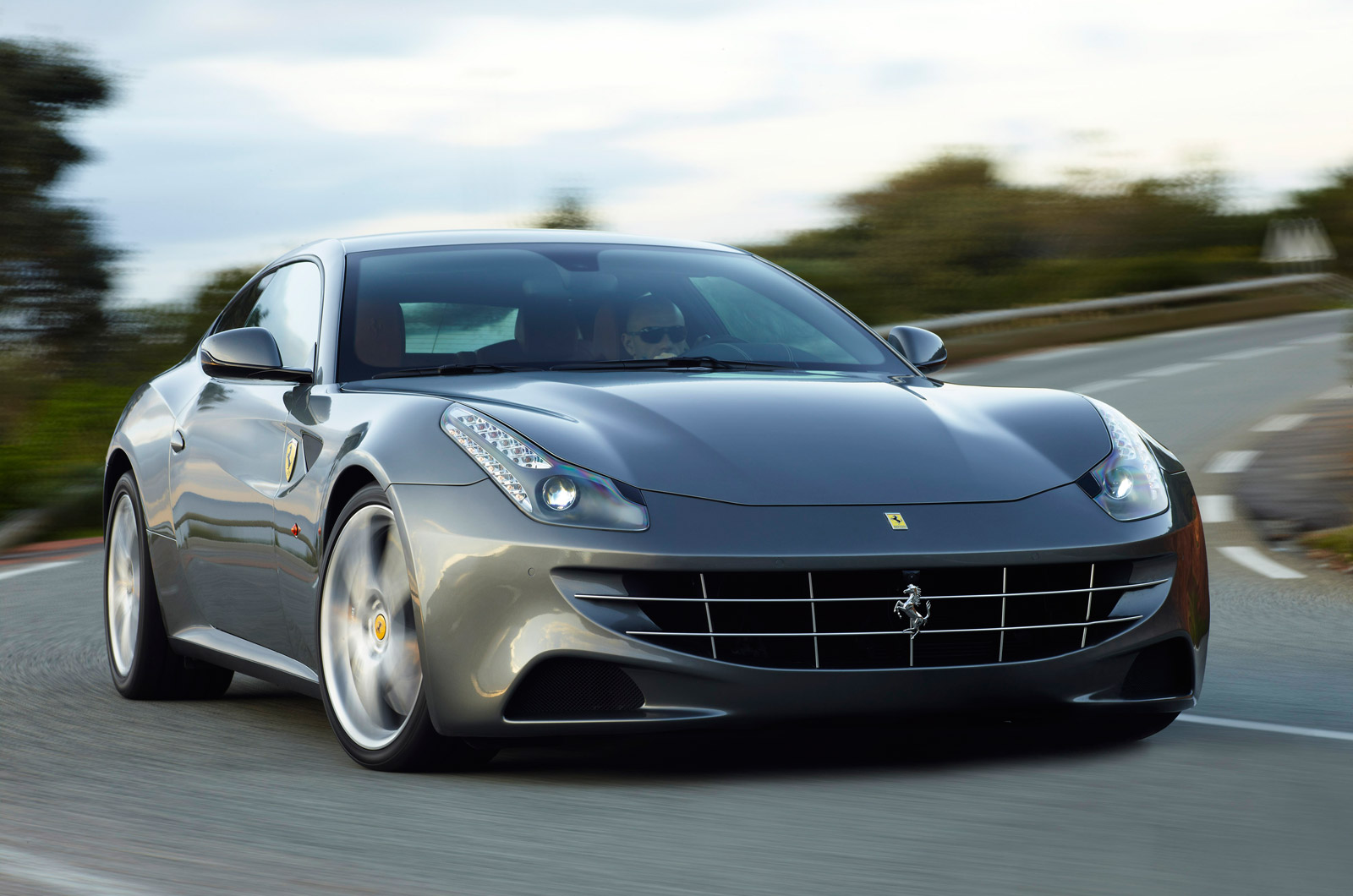Ferrari FF At a Glance :
Price: $624,646 (before on-road costs)
Engine: 6.3-litre V12Power: 486kW at 8000rpm
Torque: 630Nm at 6000rpm
Transmission: 7-speed dual-clutch auto, part-time AWD
0-100km/h: 3.7 seconds
0-200km/h: 11 seconds
Maximum speed: 335km/h
Fuel consumption: 15.4L/100km
CO2 emissions: 360g/km
Weight: 1880kg
Ferrari's first four-wheel-drive car, the FF, is anything but truck-like. In fact, it's shockingly quick and powerful. It's also uniquely styled, as one of the few two-door shooting brakes on the market.What is most interesting about the FF, however, is how it delivers drive to the road. Unlike any other production Ferrari, it's four-wheel drive. Ferrari had previously dabbled with four driven wheels in the 1987 408 Integrale concept, but the V12-engined FF is the first to make series production with such a system

The shooting brake form factor is a bit like a stubby wagon, and while that might not sound like a good basis for beautiful design, with the Ferrari FF, it works. A long, low nose slopes up into the laid-back windshield, then over a mid-length roof to end abruptly in a Kammback tail. Along the sides, fender swells and smooth contours contrast with the slightly snarling aerodynamics of the nose and tail.
Inside the $300,000 FF, you'll find typical modern Ferrari features, including a driver-centric cabin layout and control interface, two-tone finishes, and, of course, fine leathers and metal trim.
Under the FF's hood, a 6.3-liter V-12 engine generates 651 horsepower. Despite the 3,946-pound curb weight, the four-wheel-drive FF can accelerate to 60 mph in just 3.7 seconds and hit a top speed of 208 mph. We haven't had a turn behind the wheel of the FF just yet, but we're sure it's a suitably impressive drive.
 The four-wheel-drive system is, like
most of the rest of the FF, unique. Instead of using a transfer case
like most all-wheel-drive and four-wheel-drive vehicles, Ferrari sends
power directly from each end of the engine, with the seven-speed
transmission driving the rear wheels. A separate two-speed transmission
takes power off the nose of the crank to drive the front wheels. The
front wheels only drive the car below fourth gear. After that, the rears
get all of the torque.
The four-wheel-drive system is, like
most of the rest of the FF, unique. Instead of using a transfer case
like most all-wheel-drive and four-wheel-drive vehicles, Ferrari sends
power directly from each end of the engine, with the seven-speed
transmission driving the rear wheels. A separate two-speed transmission
takes power off the nose of the crank to drive the front wheels. The
front wheels only drive the car below fourth gear. After that, the rears
get all of the torque.
Exterior:

Skeptics
will call the FF one of the more boring looking Ferraris of the past few
decades, while those of a somewhat more optimistic disposition might
find it muscular and purposeful. Like the similarly mis-proportioned BMW
M Coupe before, opinions will certainly be mixed. Me? I like it. The
wide stance, massive wheels wrapped by swollen fenders, is muscular and
powerful — but there's no ignoring the generous posterior necessitated
by that rear hatch.6
Yes, you could call this the world's fastest station wagon, but I'm more inclined to call it a particularly
hot hatch. Virtually every styling cue points to power and aggression:
quad exhausts flanking a generous aerodynamic splitter; vents or intakes
on all four fenders; the bulging hood, which looks to be vacuum-sealed
over that massive, red-headed 6.3-liter V-12. Seen from the front the FF
seems to scowl at you, a menacing look in the rear-view of those ahead.
Move to the side, though, and the FF almost seems to flash a cheeky
grin. Less intimidating, sure, and a sign of the bi-polar nature of this
machine.
Our test
car was fitted with (optional) 20-inch wheels featuring a split
five-spoke design and a matte color that I found quite visually pleasing
without drawing attention away from the shapely aluminum bodywork.
Those wheels are wrapped with wafer-thin Pirelli P Zero tires, a
seemingly punishing 245/35 sidewall height that is somehow made
reasonably comfortable thanks to some suspension trickery we'll discuss a
little bit later.
 Magneto-rheological dampers help control
the FF's body motion for improved grip in a wider range of conditions,
while carbon-ceramic brakes increase the fade-resistance and stopping
power of the big shooting brake.The shooting brake form factor
brings more benefits than just unique looks: the FF holds 15.9 cubic
feet of cargo behind the seats, which can be expanded to 28.2 cubic feet
with the rear seats laid flat. That makes it one of the most practical
of the super-performance class
Magneto-rheological dampers help control
the FF's body motion for improved grip in a wider range of conditions,
while carbon-ceramic brakes increase the fade-resistance and stopping
power of the big shooting brake.The shooting brake form factor
brings more benefits than just unique looks: the FF holds 15.9 cubic
feet of cargo behind the seats, which can be expanded to 28.2 cubic feet
with the rear seats laid flat. That makes it one of the most practical
of the super-performance class
Interior:
The Ferrai
FF's door is long and it is heavy. It doesn't swing upward with the
theatrics of the Mercedes SLS or McLaren MP4-12C, nor does its handle
automatically extend in a welcoming gesture like on the Tesla Model S.
It is a car door in a very typical sense.
Ferrari
does not offer a choice of seat designs in the FF, so thankfully the
default is a good one, managing to be both comfortable and sporty — not
to mention endlessly customizable. Powered controls nestled down in a
traditional spot on the side near the floor move your throne up and down
and in the usual directions, also enabling discrete adjustments for
both the upper and lower bolsters, meaning you can get as much or as
little support as you like. A trio of buttons allow you to program and
save three configurations, enabling quick toggling between squeezy and
comfy while still leaving a third setting free for a (very) special
someone with whom you share the key.
As you'd
expect from a driver-focused machine like this, once seated virtually
everything falls quickly to hand. The vast majority of the car's
controls have been sprinkled on and around the steering wheel, as we'll
discuss in a moment, but lucky drivers won't have to stretch far for
their fingers to find the rest.
 Expand
Expand
Window
controls are found between the seats, just below a little padded cubicle
that's perfect for housing a phone while in motion. This cubbie is
framed by arcing grab handles, carbon fiber in our car (you can get them
leather-wrapped if you prefer) and perfectly positioned to accept the
white knuckles of a timid passenger. Those handles flow into a control
that houses three large buttons for enabling launch control, setting the
transmission into automatic, and shifting into reverse.Continuing
to climb up the center stack you'll find the dual-zone climate controls,
a series of satisfying physical knobs and buttons and then, finally,
the main infotainment system. It's a JBL system, unremarkable in every
respect. A trio of circular air outlets mark the center of the dash,
with one more on each the far left and far right of the cockpit. Each
offers a soft-touch knob in the center to open and close the vent
within, and if you look closely you'll spot the embossed prancing horse.
Details count, and there are plenty to be found here.
On the dash
to the left of the steering wheel you'll find the headlight controls
(which you can just leave on auto if you like) and a fiddly little knob
that's cheekily labeled "pit limiter." That's Ferrari's euphemism for
cruise control, and while it's functional (push to turn on, twist to the
right to speed up, left to slow down) the knob is poorly placed and
rather clumsy to operate. No, adaptive cruise control is not an option.
Yes, this is a Ferrari and some would argue you shouldn't ever use
cruise control anyhow, but remember: This is meant to be a practical
Ferrari, which includes road-tripping and excelling at long highway
cruises. There's a 24-gallon tank in here for a reason.

No comments:
Post a Comment